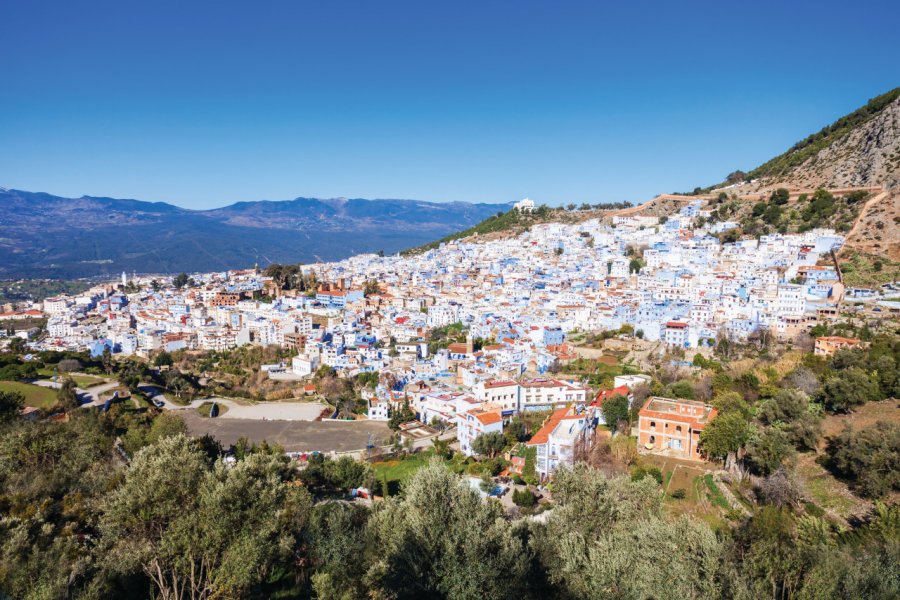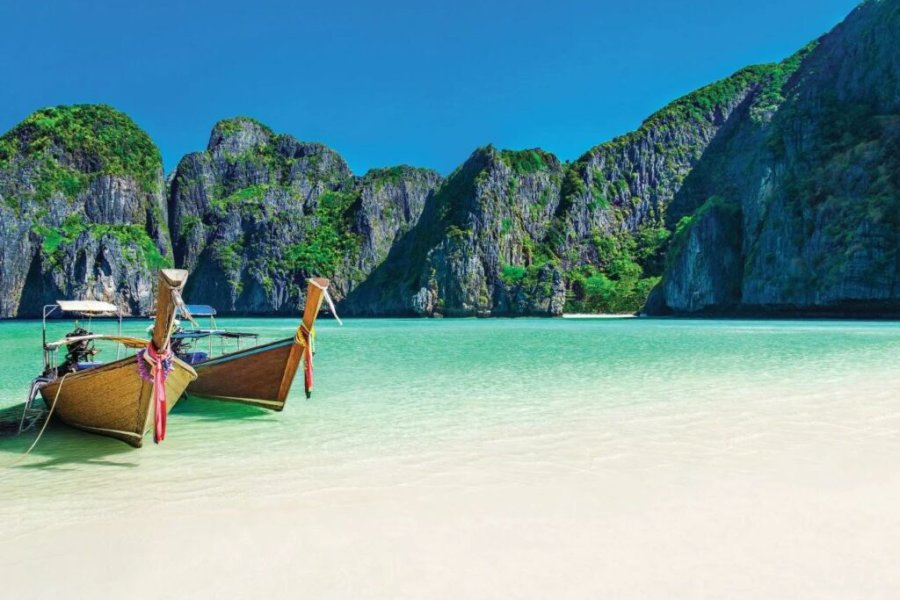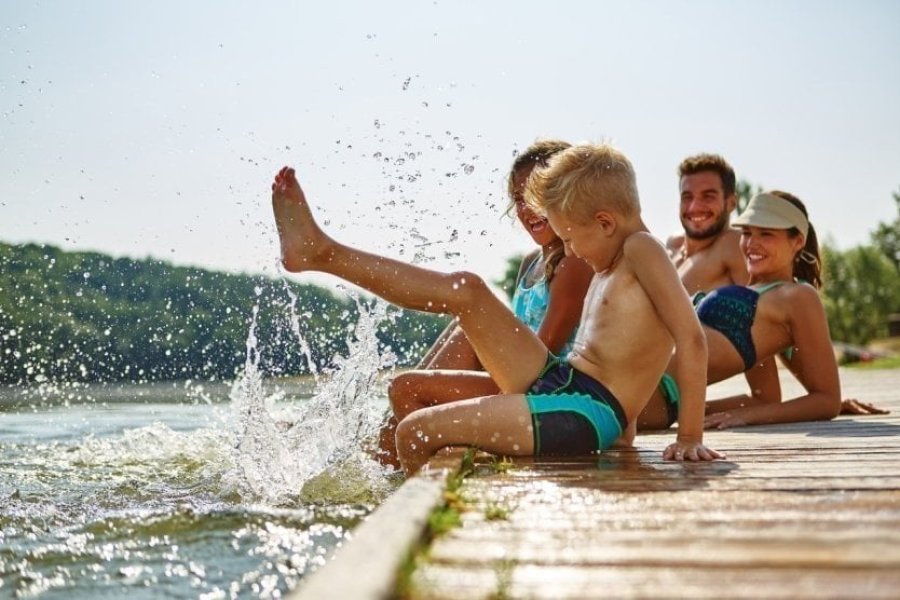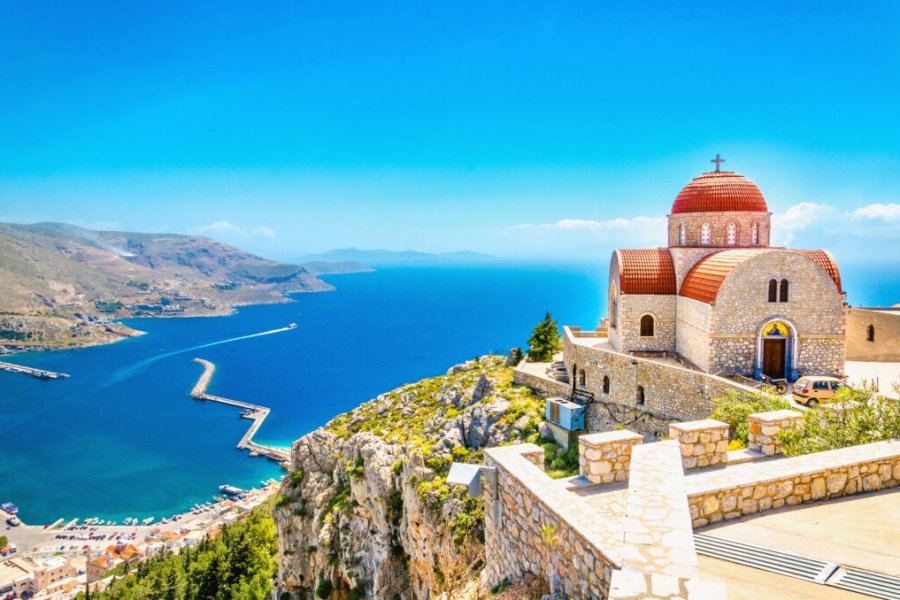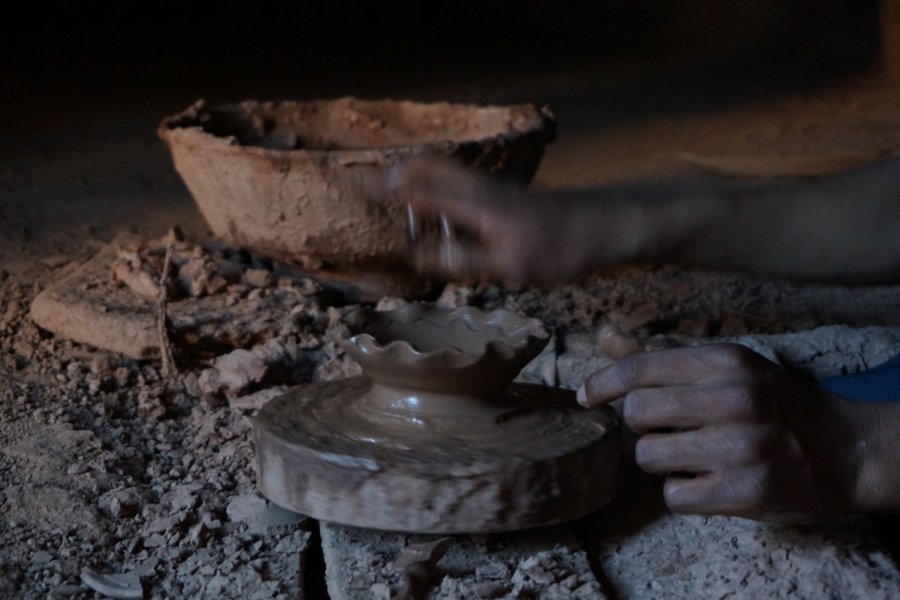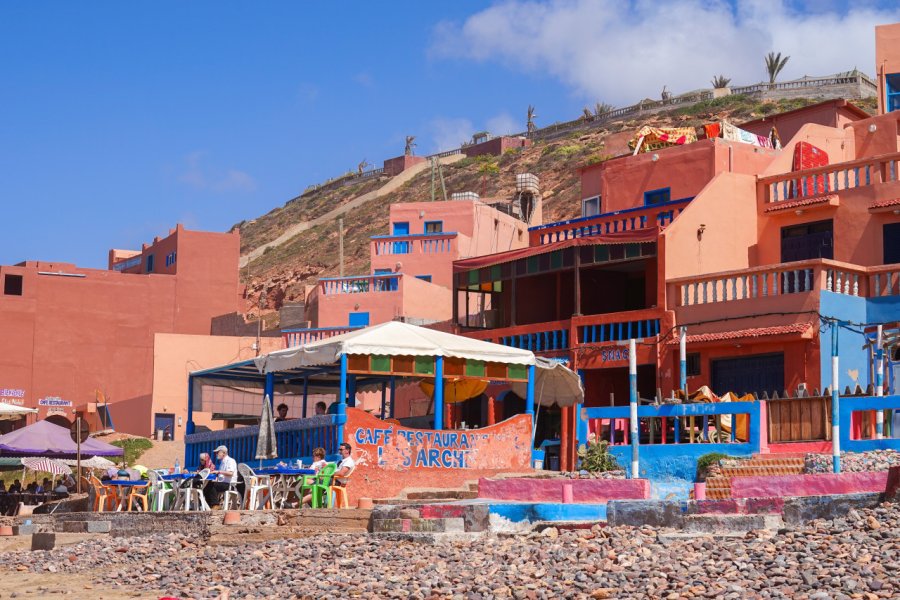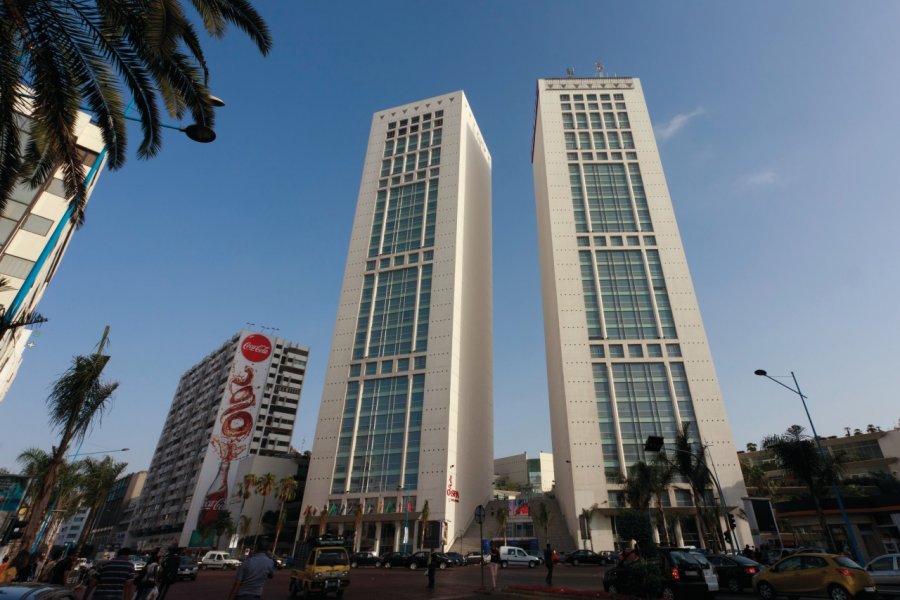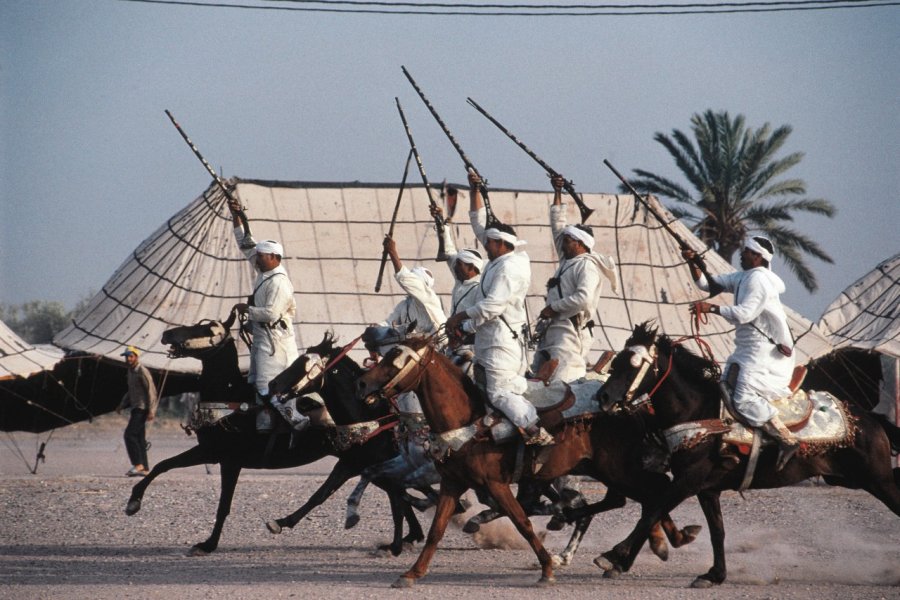Travel guide Morocco
A trip to Morocco is the guarantee to be immediately out of touch for a reasonable budget and without going very far. The variety of landscapes is incredible and it is enough to leaf through a tourist guide of Morocco to realize it... From the mountains of the High Atlas to the dunes of the Sahara, passing by the wild Atlantic coast and the architectural richness of the imperial cities, so many contrasts and beauty... Nature lovers will discover Morocco during a trek in the mountains in the Rif or on camels in the Moroccan desert, surfers will enjoy the waves of Essaouira and the rest of the Atlantic coast, lovers of fine sandy beaches will be thrilled in Agadir, and those who prefer oriental idleness will happily relax in a riad in Marrakech, stroll in the palm grove or in the magnificent Majorelle garden and go haggling in the souk next to Jemaa el-Fna Square. As for history lovers, they will not stop getting lost in the medinas of Chefchaouen, Fez, Tangier, Meknes, Tetouan... all as different as the others. Finally, lovers of gastronomy, couscous and other tagine will not be left out, as Moroccan cuisine is succulent and varied. And it is only a sample of the thousand and one wonders of Morocco, some of which are listed as UNESCO World Heritage Sites!
What to see, what to do Morocco?
-
Book an activity
-
Customized travel
- The most beautiful cities Morocco
When to go Morocco ?
The high tourist season in Morocco varies from region to region, generally from mid-October to mid-May. If you like peace and quiet, avoid the French school vacation periods. For the South, if the months of April and May are the best periods to discover the fauna, it is preferable to go to Morocco in March to be more quiet. For the northern coasts, summer is the high season, because Moroccans rush there to enjoy a little coolness. The low tourist season runs from mid-May to mid-October. For reasons of economy and tranquility, it can be advantageous to travel to Morocco in low season and it is the best season to leave while saving money and preserving your travel budget; however it happens that in this period some services and activities are removed, especially during Ramadan.
Suggested addresses Morocco
Travel Morocco
-
Find a hotel
-
Car Rental
-
International e-SIM package
-
Find a local agency
Villes impériales, vestiges antiques, montagnes arides, oasis luxuriantes, gorges spectaculaires et longues plages de sable fin, le Maroc offre une multitude d'itinéraires et de possibilités d'excursions, qu'il faudrait au moins rester un mois voire plus pour découvrir tous ses trésors. Cependant, en une semaine ou plus, vous pourrez opter pour la visite d'une ou plusieurs régions, selon votre point d'arrivée, le temps disponible, vos centres d'intérêt et bien sûr de votre budget. D'une manière générale, il vaut mieux privilégier la qualité que la quantité, surtout si vous avez peu de temps sur place. Si vous avez prévu de parcourir de longues distances et que votre budget vous le permet, louez une voiture. Bien que se déplacer en transport en commun soit bon marché et guère compliqué, le séjour sera plus confortable, les distances plus courtes et vous pourrez surtout accéder à des endroits plus originaux et intéressants.
Find unique Stay Offers with our Partners
How to go Morocco
How to go alone
Well served by airlines, Morocco is a safe destination and the Moroccan authorities have made great efforts to secure and supervise tourism throughout the country. Beware of petty crime in major Moroccan cities such as Agadir, Marrakech and especially Casablanca where, unfortunately, snatch-and-grab thefts are quite common. Also be careful in Fez, which has become an unsafe city in recent years with an increase in petty crime and assaults in the evening.
How to go on a tour
Tours organized in Morocco by tour operators and guides are usually of 8 days but you will need a tour of a fortnight to do all Morocco from north to south. The good news is that the value for money is generally good but beware of hidden extras. There are also a large number of thematic stays: discovery of the imperial cities, escapade in the Sahara, sports stay in the Moroccan High Atlas, excursions off the beaten track, Moroccan culture... or all inclusive stays. You will really have the embarrassment of the choice for reasonable prices.
How to get around
In terms of transportation, Morocco has an excellent rail network that connects most of the country's major cities, as well as the CTM long-distance bus network, which is more economical. Car rental in Morocco is still quite expensive compared to other countries in the Maghreb and the roads are not always good, being reduced to simple dry tracks in the south. For those who want to cover long distances in Morocco, air tickets for domestic flights are available at generally good prices
Featured articles Morocco
Discover Morocco
At the crossroads of the worlds, Morocco has been a land of covetousness since prehistoric times, successively occupied by peoples from various horizons. These multiple invasions have left the country with a remarkable cultural heritage, from architectural constructions to traditional music. The Berbers, one of the first tribes to settle in Morocco, developed a varied craft industry in the mountains, whose techniques have been passed down from generation to generation. Tapestry, goldsmithing, embroidery, pottery... you can still appreciate these meticulous works in the souks. Morocco also offers a wide range of local products, including saffron, the kingdom's red gold, which is prized for its many virtues and is used in many of the country's typical dishes. Between its disparate landscapes, its heterogeneous population, its delicate gastronomy and its various beliefs, Morocco invites you to discover its thousand and one facets.
Pictures and images Morocco
The 24 keywords Morocco
1. Crafts

The arts and crafts are numerous and each as impressive as the next! You can visit tanneries in Taroudant, potteries in Merzouga and tapestries in Marrakech. Buildings are richly decorated with a thousand different styles and aesthetic moldings. And last but not least, Berber culture brings the science of jewelry-making.
1. Baraka
It is the divine grace, and generally the luck in the Arab world. It is obtained by invoking the memory of a holy man or, better still, by making a pilgrimage to the site of his shrine (kubba or zaouia). To ensure the baraka, it is necessary to collect earth near the mausoleum and keep it preciously like a relic!
2. Distance
In the south of Morocco, expect to do some driving. Fortunately, they are mostly in good condition, either new or recently rebuilt. Sometimes, however, you'll have to take sandy roads, and manoeuvring can be tricky. In any case, be patient: it takes around 15 hours to get from Agadir to Dakhla!
2. Kasbah

A veritable fortified village belonging to the lord, the kasbah served as a refuge for peasants in case of attack. It is built of pisé, a mixture of clay soil and pebbles, surprisingly resistant to time. Southern Morocco conceals the most beautiful kasbahs, some of which date from the 17th century. That of Aït Benhaddou is a beautiful example.
3. Dromedary

The dromedary is the quintessential symbol of southern Morocco. Firstly, for the exotic side of this humped ruminant, but above all, for the historical image it reflects. Indeed, for centuries it was a necessary element in the caravan routes of desert nomads. And the development of the region owes much to it.
3. Fondouk
Also known as caravanserai, fondouks are old inns where merchants and their camels used to come to rest. Today they have become places where goods are stored. There are 155 fondouks in the medina of Fez, some of which have been restored. The most beautiful is undoubtedly the fondouk Nejjarine.
4. Climbing
Outdoor climbing attracts climbing tourists from all over the world. Indeed, a number of rock faces are becoming popular playgrounds for climbers. The best known is just over two hours from Ouarzazate, at Todgha, and boasts over 350 routes, from amateur to advanced.
4. Hammam
There's no shortage of opportunities to relax in a hammam in Morocco! As well as purifying the body, these steam baths also play an important social role. Everyone goes there to wash, but also to meet and chat with fellow human beings. There are usually two public hammams: one for women, the other for men.
5. Islam
The other backbone of the country, along with the king, is the Muslim religion. In southern Morocco, as throughout the country, prayers are held five times a day, and can take place in the street, in the middle of a trek, or in the middle of a 4x4 outing. It's not surprising to see one of your guides taking a break to pray!
5. Medersa
It is the Koranic schools that were formerly responsible for the education of students in theology, history or science. Under the Merinid sultans, they multiplied everywhere in Morocco. The prayer room is a pure architectural jewel, decorated with chiselled zelliges. The only religious monument open to non-Muslims, enjoy it!
6. Kitesurfing

In just a few years, the town of Dakhla has become one of the most popular spots in the surfing world. Barack Obama and Prince William have even visited! It has to be said that conditions are favorable all year round, which is one of the most attractive criteria for sports enthusiasts. Further north, Essaouira also attracts visitors.
6. Medina

It's the old town inside the ramparts, very popular and bustling with activity. The medinas of Marrakech and Fez bewitch with their maze of alleyways, intense aromas and myriad craft stores. To lose yourself in their winding alleys is to plunge into a timeless medieval atmosphere!
7. Medina
Literally "the old city", the medina is the historical center of the cities you will visit. Not all of them are of similar size, and above all, do not benefit from the same state of conservation. If most of them are preserved and enhanced, the medina of Agadir for example, has been entirely refurbished for tourists.
7. Muezzin

A member of the mosque, the muezzin calls for prayer from the top of his minaret by modulating suras from the Koran. In the past, he was chosen for his thunderous voice, which would echo throughout the city. Today, loudspeakers have replaced his long breath, which does not alter the disorientation generated by the five calls per day.
8. Kingdom
The King's role in Morocco goes beyond the glitz and glamour. He is a founding element of national unity, one of the pillars uniting all Moroccans across the country. Popular, he interferes fully in politics, and has real executive powers, such as dismissing an incompetent minister or calling new elections.
8. Date Palm
The Berbers had the brilliant idea of introducing this tree from Mesopotamia and planting it where there were springs in the middle of the desert: the oasis had just been invented! Not very demanding in water, the date palm has adapted well, as can be seen from the green flows along the oases. Delicious dates are harvested here and are very much appreciated by the locals.
9. Western Sahara
If Morocco were a house, the Sahara would be its garden! And what an area it is! Half the size of France, the Moroccan part of the Sahara is one of the gateways to a vast desert that stretches across a dozen countries in Africa. Always disputed, the Western Sahara is regularly the subject of claims by Algiers.
9. Riad
This is often referred to as a house, but it is an abuse of language. The riad is actually the inner courtyard of a house. With its central fountain and lush vegetation, this space is a delicious haven of peace and freshness, inspired by the Andalusian patio. You can spend pleasant moments with your family, isolated from the bustle of the medina.
10. Souk
The souk is one of the main attractions of Moroccan culture. One goes there by strolling, letting oneself be carried by the smells, attracted by the colors or caught by an eye-catching merchant. It is a place of permanent wonderment where the ancestral tradition of trade is expressed in each alley and becomes, over the days, a fun game.
10. Tadelakt
A mixture of lime, white cement and pigments, tadelakt is a decorative coating, the preparation of which requires a certain know-how. It is traditionally used to dress bathrooms and hammams, as it has the advantage of being waterproof. To the touch, it offers a feeling of softness, which is polished with pebbles.
11. Tajine

If food is one of the country's main assets, with many rich and spicy dishes, the tajine remains the national mascot, and we enjoy comparing the different flavors depending on the restaurant. Tajine dishes can sometimes become real works of art, and vary according to the cities you pass through on your trip.
11. Mint tea
Simply unavoidable! And if one drinks it all over Morocco, it is in the South that its consumption is the most important. Mint tea is a whole ritual that obeys precise rules, from its preparation to its tasting. Difficult to decline the invitation, wait for at least the third glass so as not to offend your guests.
12. Tea
It can be drunk at any time and in any environment. But if it's omnipresent in the culture of southern Morocco, it's always drunk in a convivial atmosphere. Tasting it is a real ritual! Purists will appreciate distinguishing all the steps, pouring the tea back into the teapot, pouring with height... and so on.
12. Zaouïa

This is the building that houses the tomb of a marabout. The faithful come here to pray, and to enjoy the baraka of the late holy man. From the 18th century, the zaouias gave birth to a real cult of marabouts, which this term ended up designating religious brotherhoods in general. They are forbidden to non-Muslims.
You are from here, if...
You greet everyone you meet in Arabic. After all, after a few days you know everyone!
You negotiate firmly with the merchant. Even if, in the end, you know he'll come out a winner.
You eat the tagine with your right hand... because it's hard to break the local custom, sitting between your Moroccan friends.
You drink mint tea at all hours of the day and into the evening... because you don't turn down a glass of tea for fear of offending your warm-hearted host... even if it does put you to sleep!
You're eagerly awaiting Friday for a hearty couscous. Even if you find it on the menu on other days, this typical dish, synonymous with joy, is always best shared in good company on Fridays!
You say choukran every time someone welcomes you. Because it's one of the few Arabic words you can pronounce!

